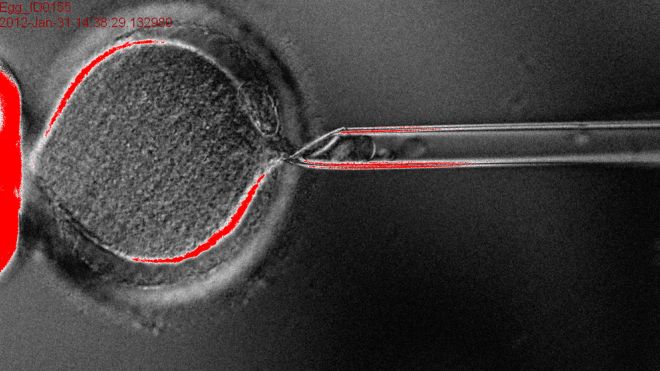New cancer tools allow patients to reconsider chemo
After decades of using one-size-fits-all therapies to combat cancer, doctors are using new tools to help decide when their patients can skip chemotherapy or other harsh treatments. An approach to oncology that has been in place for decades is beginning to yield to an arsenal of long-term clinical studies, genetic tests and novel drugs that target cancer cells and their infrastructure. “What is happening is a combination of new technology and more-targeted cancer drugs,” said Dr Sandra Swain, medical director of the Cancer Institute at Washington Hospital Center and president of the American Society of Clinical Oncology (ASCO). “We've tried the approach of big, nonspecific treatments ... We have found that throwing chemo at patients has not (necessarily) cured them.” Traditional chemotherapy drugs work by interfering with the entire body's system of cell replication, causing harsh side effects like fatigue and hair loss. Since the completion of the human genome project in 2003, scientists have made progress in unlocking the genetic basis of a range of diseases, including cancer. That has paved the way for genetic testing as well as drugs that block specific pathways that cancer cells use to grow and reproduce. Such targeted cancer drugs, which sometimes preclude the need for chemotherapy, are being sold by companies ranging from Pfizer Inc, the world's largest drugmaker, to Ariad Pharmaceuticals Inc, which early this year launched its first drug, to treat leukemia. At the same time, large-scale studies that look at whether some types of patients are better off with less treatment are giving doctors more confidence to hold off on using traditional cancer drugs. Laurie Levin, now 64, was successfully treated in her 20s for non-Hodgkin's lymphoma, but faced a dilemma after being diagnosed with breast cancer in 2005 since the earlier radiation and chemotherapy had already raised her risk of developing heart problems or leukemia. A $4,000 genetic test showed that her breast cancer was unlikely to return, providing the confidence to undergo a lumpectomy and avoid chemotherapy. “It was like someone handed me my life back when I got those results,” she said. Use of the Oncotype DX test, which analyzes genes involved in tumor recurrence, has cut the use of chemotherapy in U.S. breast cancer patients by 20 percent over the past eight years, according to its maker, Genomic Health Inc. The company recently launched a similar test designed to measure whether men with prostate cancer need to undergo surgery or radiation. Tests and studies can clarify treatment, but costs remain on the upswing because the newest drugs are very expensive, with monthly price tags often in the thousands of dollars. By 2016 annual global sales of cancer drugs will nearly triple, to $88 billion from a decade earlier, according to IMS Health. 'RIGHT-SIZING TREATMENT' The “less is more” approach to cancer will be one highlight of ASCO's annual meeting in Chicago that begins at the end of this month. On Wednesday, ASCO released thousands of abstracts on new clinical trials of cancer treatments. One large, long-term study found that most men diagnosed with early-stage seminoma, a common type of testicular cancer, did fine with no treatment following surgery to remove the tumors. Cure rates for the disease have always been quite high. Several European countries, including Denmark where the study was conducted, monitor seminoma patients for any relapse before further treatment. In the United States, about half of early-stage patients are still given radiation or chemotherapy, according to ASCO. “Opting for surveillance spares patients, most of whom are young men, from the harmful side effects of chemotherapy and radiation without diminishing their chances for a long and healthy life,” said ASCO's incoming president, Dr Clifford Hudis, in a statement. Physicians say it is difficult to quantify in statistics, but there is growing recognition that less is more in terms of potentially toxic cancer treatments. The approach is especially important for young patients who will have many years ahead of them after beating an initial bout of cancer. “We are right-sizing treatment,” said Dr. James Mohler, chair of the department of urology at Roswell Park Cancer Institute in Buffalo, New York. He pointed to recent national guidelines calling for “active surveillance” of older men diagnosed with slower-growing prostate cancer. A study presented earlier this year at an ASCO meeting in Florida found similar survival rates for men with high-risk prostate cancer who received radiation and either 18 or 36 months of hormone therapy. The findings suggest the therapy, which causes significant side effects, could be given for less than the current standard of 24 to 36 months. Another recent study out of the Duke Cancer Institute in Durham, North Carolina, found that survival odds for women with early-stage breast cancer who underwent breast-preserving surgery such as lumpectomy were as good as, or even better than, the odds for women who had mastectomies. “We are going to see reevaluations of very successful therapies to determine whether or not we can achieve the same results using less treatment,” said Dr Armand Keating, director of the hematology division at the University of Toronto and president of the American Society of Hematology. The first-ever study showing that a type of leukemia could be cured without using chemotherapy was released in December. The Italian-German study found that a combination of a derivative of vitamin A, known as ATRA, and arsenic trioxide, a newer drug, worked as well as ATRA and chemotherapy in patients newly diagnosed with acute promyelocytic leukemia (APL). “APL used to be one of the most dreaded strains of cancer, but with ATRA and chemo the results are very gratifying,” Keating said. “Now we have two agents that are not chemo agents ... That to me is a milestone. I can't see any reason why this wouldn't become the standard of care.” A recent trial conducted in France found that omitting standard chemotherapy, which has been linked to heart damage, from the initial treatment of a type of childhood leukemia did not reduce survival outcomes. “The nice thing is you have omitted a potentially toxic agent that contributes to morbidity and maybe mortality down the road,” Keating said. The priciest therapies are designed to take advantage of genetic mutations associated with cancer cells, some of them found only in a small percentage of patients. A new drug for melanoma, BRAF inhibitor Zelboraf from Roche Holding AG, is designed to work by targeting a specific genetic mutation found in about half of all melanomas. Patients are first tested to see if they have it. Pfizer's lung-cancer drug Xalkori, which targets a mutation in the ALK gene, works in about 4 percent of lung cancer patients. It also has been effective as a treatment for a rare but aggressive type of childhood lymphoma. “We've been really trying for years to be more precise about who needs treatment ... Now we are more able to achieve it,” said Swain.source : http://www.foxnews.com/health/2013/05/16/new-cancer-tools-allow-patients-to-reconsider-chemo/






